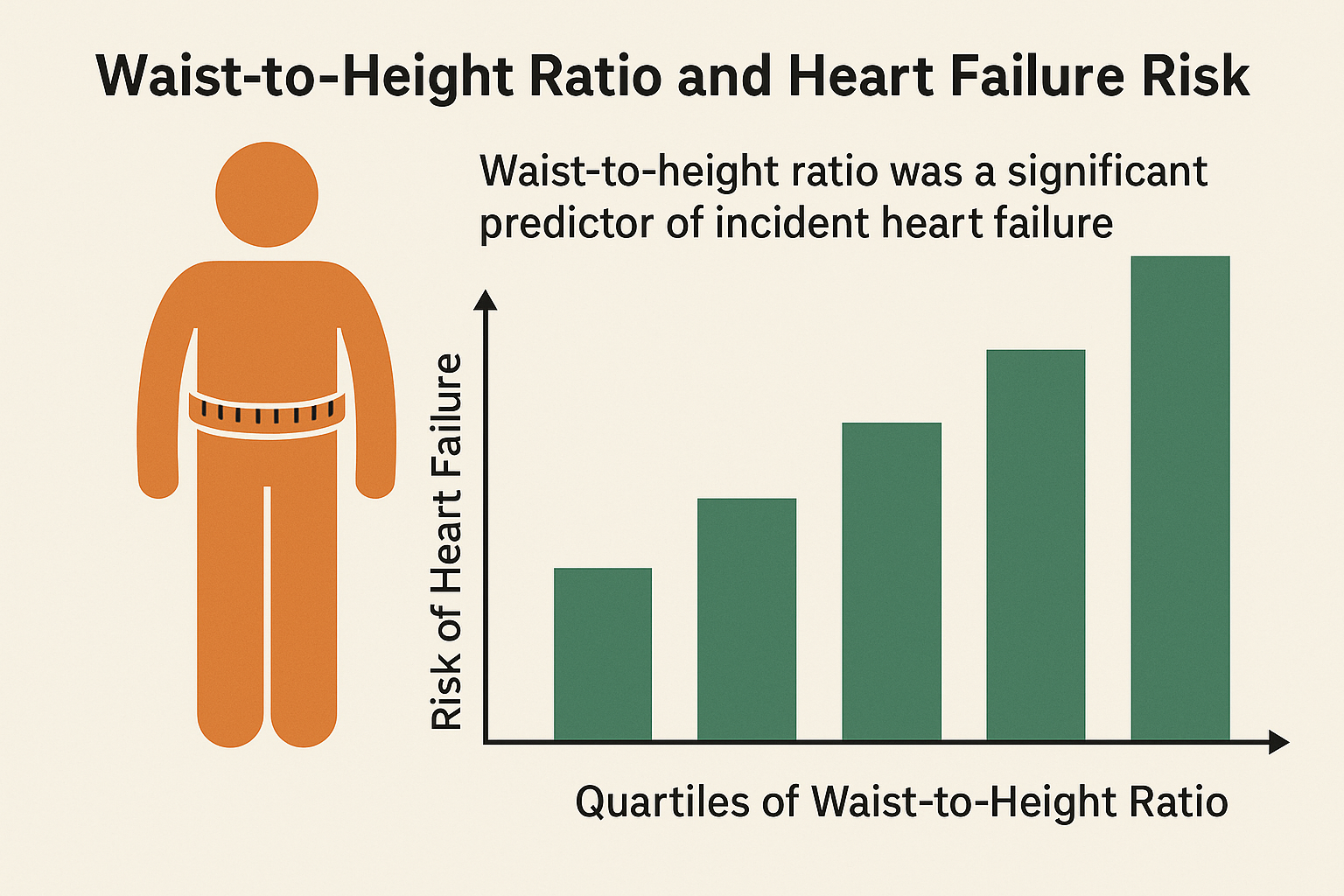
A new study presented at Heart Failure 2025, a scientific congress of the European Society of Cardiology (ESC), reveals that waist-to-height ratio (WtHR) is a significant and independent predictor of heart failure (HF) incidence—potentially offering a more accurate metric than the widely used body mass index (BMI).
While obesity is a known risk factor for HF, BMI—the most common measure of obesity—has limitations, including its inability to account for fat distribution and its variation across sex and ethnicity. Dr. Amra Jujic of Lund University, Sweden, led the study to examine whether WtHR, a measure of central adiposity, could better predict HF risk. Unlike BMI, WtHR directly reflects visceral fat accumulation, which is more closely linked to cardiometabolic complications.
The research analyzed data from 1,792 participants in the Malmö Preventive Project, aged 45–73 at baseline. The cohort included individuals with normal glucose levels, impaired fasting glucose, and diabetes. With a mean participant age of 67 and 29% women, the median WtHR was 0.57. Over a median follow-up of 12.6 years, 132 HF events were documented.
Findings revealed that a higher WtHR was significantly associated with increased risk of HF. Specifically, for each standard deviation increase in WtHR, the hazard ratio (HR) for HF was 1.34 (95% CI 1.12–1.61; p=0.001). Moreover, individuals in the highest quartile of WtHR (median of 0.65) had a substantially elevated risk of HF (HR 2.71; 95% CI 1.64–4.48; p<0.001) compared to those in lower quartiles.
Dr. John Molvin, co-author of the study, highlighted that the median WtHR in this cohort exceeded the 0.5 threshold commonly associated with increased cardiometabolic risk. He emphasized the clinical relevance of maintaining a waist circumference less than half one’s height.
The researchers concluded that WtHR may be more effective than BMI in identifying patients at risk for HF who could benefit from targeted obesity interventions. Future studies will explore WtHR’s predictive value in broader cardiometabolic outcomes.

